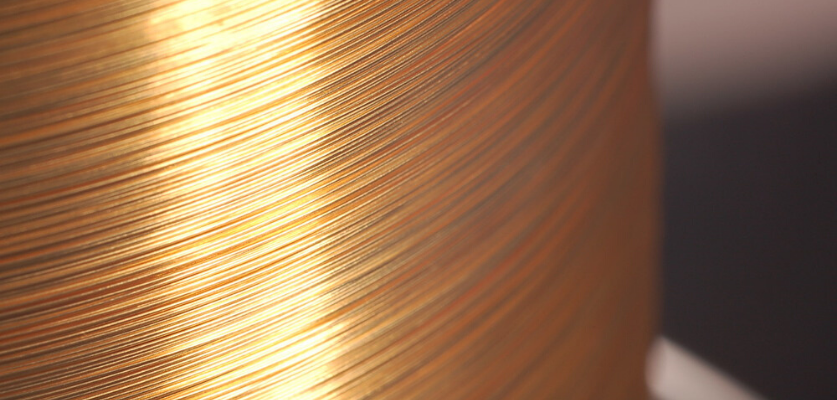Where the Heat Is On, Tungsten Wire Still Excels
Many of the legacy applications for tungsten wire remain strong and necessary. There are a variety of products in general industry, ranging from filaments to furnaces, in which tungsten wire is used and remains without substitute.
Given tungsten’s unique elemental properties, it is highly unlikely there will ever be a superior alternative for certain industrial applications in which tungsten wire is a key component. There are even lamp products in which the poster child for technological obsolescence, the incandescent lamp, cannot be replaced with newer technologies.
Tungsten filament wire shines where blinking is required.
Despite the first wave of CFLs and the seemingly unstoppable conversion to LEDs (or at least it will be unstoppable once the price falls even further), there are certain lamps that CFLs and LEDs simply cannot replace.
For example, in a wonderful instance of irony, we all know that electronic devices don’t like to be turned on and off rapidly and repeatedly. However, there are certain lamps whose sole purpose is to do precisely that.
A perfect example is the turn signal or flasher function in an automobile. Here, the blinking of the lamp, requiring the on-off thermal cycling of the electronic component, is not at all suitable for LEDs.
In the early days of enthusiastic LED adoption, there were efforts to develop a mechanical shutter that would allow LEDs to remain on constantly while appearing to blink. However, it quickly became clear that this was a cumbersome and unworkable solution for products with heavy use as safety equipment — that is, products requiring:
- Long life
- High temperature and exposure resistance
- Endless repeatability
So, the next time you signal a turn in your car, consider that you may very well owe that capability to the presence of a bulb with a tungsten filament wire, which remains the long life, low cost source for that blinking solution.
Tungsten properties provide advantages where temperatures are high.
With no other elemental metal having the same heat resistance and shape retention properties, tungsten wire also remains necessary outside of the lighting industry, in applications such as the following.
Industrial furnace support structures
Just as tungsten heating elements can be used in industrial furnaces, so too, can tungsten wire, although with a different purpose — as a support structure rather than as an electrode that provides the heat in a tungsten furnace.
.
In a wide range of furnaces and ovens, tungsten wire holds its shape at the highest temperatures. This makes it excellent for woven oven mats and other weight-bearing surfaces that need to maintain the position of an object as it is subjected to the furnace’s high temperatures.
Tungsten wire’s heat resistance enables it to hold the object in the proper location in the hot zone without sagging, collapsing, falling apart, or otherwise moving the object out of the optimal position.
Tungsten and tungsten rhenium thermocouples
Tungsten wire can be used in thermocouples — thermoelectric devices used to measure and monitor temperatures in kilns, gas turbines, diesel engines, and other high-temperature industrial processes.
Tungsten thermocouples can also be used as temperature sensors in thermostats and as flame sensors in safety devices for gas-powered appliances
With extremely high temperatures where pure tungsten can undergo recrystallization and becomes brittle, tungsten rhenium wire offers an alternative. For applications such as vacuum furnaces and hydrogen and inert atmospheres, a tungsten rhenium thermocouple can be used to measure temperatures up to 3992°F (2200°C).
Semiconductor manufacturing and testing
Even though integrated circuits are replacing many electronic applications that use tungsten or tungsten wire, you cannot make an integrated circuit without tungsten wire. Why is this?
Most integrated circuits made today start with a single crystal ingot of silicon, called a boule. It is created by dipping a small seed crystal into pure molten silicon in an oven that has been heated to about 2732°F (1500°C).
Like pulling taffy, the molten silicon is slowly pulled and elongated into a boule, forming a larger, cylindrical crystal. Once it is solidified, the crystal is sliced into wafers and polished to provide very regular, flat substrates for semiconductors.
And the only material that is suitable for pulling a boule — and uniquely capable of performing as designed in the very high temperature of the silicon manufacturing process— is a cable made of woven tungsten wire.
Because tungsten has the least elongation of any material, tungsten wire can pull the silicon in operating temperatures where other materials with a lower melting point would stretch and break.
Tungsten wire makes its reappearance in semiconductor chip manufacturing as cantilever probe needles. These probes are used to test integrated circuits when they are still arrayed on monocrystalline wafers.
(Learn more in our blog A Closer Look at Utilizing Tungsten Wire for Probes.)
Borescopes
Another industrial application in which tungsten wire’s high-temperature properties prove to be indispensable is in the borescopes used to inspect or take measurements of the interior spaces of very high-temperature environments.
For areas that are inaccessible by other means, these optical devices are commonly used in the inspection of engines, turbines, pipes, and tanks. Tungsten wire allows the borescope to maintain its shape and function in these high-temperature, hostile environments.
Additionally, tungsten wire is invaluable for applications where stiffness is also required for delivery in a high-temperature environment. Along with its heat resistance, spiral or braided tungsten wire provides a level of rigidity that enables a borescope to be guided through the interior that is being inspected — similar to an endoscope being guided through the human body in medical diagnostics.
Another advantage of tungsten is its vapor pressure.
Yet another benefit of tungsten at high temperatures is its extremely low vapor pressure, which comes into play in applications such as electron emitters, ion implantation, and vacuum metalizing coils.
Electron emitters
For instance, tungsten filament wire is used as the electron emitter in devices such as scanning electron microscopes (SEMs), transmission electron microscopes (TEMs), and microprobes used in spectrometry systems. Due to its low coefficient of thermal expansion, the tungsten wire is able to maintain the correct shape for generating the electron beam.
Ion implantation
Here, tungsten heavy alloy is used as both the ion implantation chamber and the electrode to generate the ion beam.
An extremely sophisticated method, ion implantation is used in semiconductor manufacturing and metallic surface preparation. The process by which ions are accelerated into their target uniquely changes the properties of the material in ways previously impossible to achieve.
Vacuum metallizing coils
Conceptually a much simpler process, vacuum metalizing coils made from tungsten are used in the process of coating the surfaces of low-cost plastic products — such as toys, jewelry, cosmetic containers, and small decorative parts — with metal evaporates. This gives the products the attractive illusion of being made from a shiny, clean metal.
The products (or parts) are placed in a vacuum along with the coating metal (such as aluminum), which is heated with the metalizing coils until it has evaporated. In a dramatic, explosive event. The resulting vapor dispersion settles on the products/parts, quickly and completely coating their surfaces with a thin, uniform film of the metallic evaporate.
The use of doped tungsten wire is preferred over pure tungsten, providing corrosion resistance in addition to the mechanical properties that allow tungsten wire to be used as vacuum metalizing coils. The result is metallizing coils with a longer service life than coils made from undoped (pure) tungsten.
The possibilities are endless.
These are only a few examples of the many intriguing industrial uses for tungsten wire — a product that keeps proving its value in applications where its unique properties deliver results that are difficult (perhaps even impossible) to achieve through other methods at a comparable cost.
For tips on tungsten wire or other precision metal fabrication needs, download our free guide to tungsten wire properties and applications.






